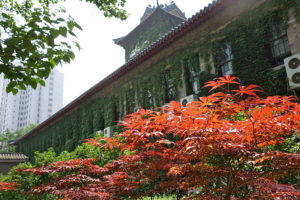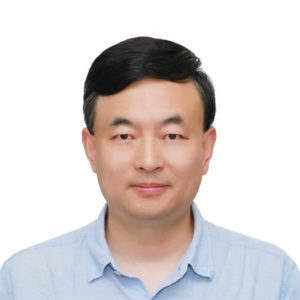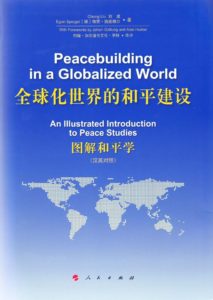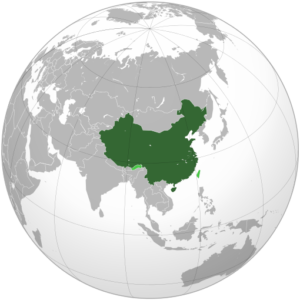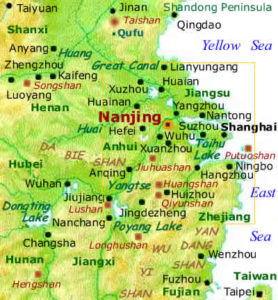Peace education
Peace education is the process of acquiring the values, the knowledge and developing the attitudes, skills, and behaviors to live in harmony with oneself, with others, and with the natural environment.
There are numerous United Nations declarations on the importance of peace Information Age Publishing. ISBN 978-1-59311-889-1. Chapter details; and Page, James S. (2008) 'Chapter 9: The United Nations and Peace Education'. In: Monisha Bajaj (ed.)Encyclopedia of Peace Education. (75-83). Charlotte: Information Age Publishing. ISBN 978-1-59311-898-3. Further information</ref> Ban Ki Moon, U.N. Secretary General, has dedicated the International Day of Peace 2013 to peace education in an effort to refocus minds and financing on the preeminence of peace education as the means to bring about a culture of peace.[1][2] Koichiro Matsuura, the immediate past Director-General of UNESCO, has written of peace education as being of "fundamental importance to the mission of UNESCO and the United Nations".[3] Peace education as a right is something which is now increasingly emphasized by peace researchers such as Betty Reardon[4] and Douglas Roche.[5] There has also been a recent meshing of peace education and human rights education.[6]
Contents
Definition[edit]
Ian Harris and John Synott have described peace education as a series of "teaching encounters" that draw from people:[7]
- their desire for peace,
- nonviolent alternatives for managing conflict, and
- skills for critical analysis of structural arrangements that produce and legitimize injustice and inequality.
James Page suggests peace education be thought of as "encouraging a commitment to peace as a settled disposition and enhancing the confidence of the individual as an individual agent of peace; as informing the student on the consequences of war and social injustice; as informing the student on the value of peaceful and just social structures and working to uphold or develop such social structures; as encouraging the student to love the world and to imagine a peaceful future; and as caring for the student and encouraging the student to care for others".[8]
Often the theory or philosophy of peace education has been assumed and not articulated. Johan Galtung suggested in 1975 that no theory for peace education existed and that there was clearly an urgent need for such theory.[9] More recently there have been attempts to establish such a theory. Joachim James Calleja has suggested that a philosophical basis for peace education might be located in the Kantian notion of duty.[10]James Page has suggested that a rationale for peace education might be located in virtue ethics, consequentialist ethics, conservative political ethics, aesthetic ethics and the ethics of care.[11] Robert L. Holmes claim that a moral presumption against violence already exists amongst civilized nations. On the basis of this presumptive prohibition, he outlines several philosophical values which are relevant to the nonviolent resolution of conflicts between nations on the international level including pacifism.[12] [13]
Since the early decades of the 20th century, "peace education" programs around the world have represented a spectrum of focal themes, including anti-nuclearism, international understanding, environmental responsibility, communication skills, nonviolence, conflict resolution techniques, democracy, human rights awareness, tolerance of diversity, coexistence and gender equality, among others.[14]
Forms[edit]
Conflict resolution training[edit]
Peace education programs centered on conflict resolution typically focus on the social-behavioural symptoms of conflict, training individuals to resolve inter-personal disputes through techniques of negotiation and (peer) mediation. Learning to manage anger, "fight fair" and improve communication through skills such as listening, turn-taking, identifying needs, and separating facts from emotions, constitute the main elements of these programs. Participants are also encouraged to take responsibility for their actions and to brainstorm together on compromises[15]
In general, approaches of this type aim to "alter beliefs, attitudes, and behaviours...from negative to positive attitudes toward conflict as a basis for preventing violence" (Van Slyck, Stern and Elbedour, 1999, emphasis added).[16] There are various styles or approaches in conflict resolution training (ADR, Verbal Aikido, NVC) that can give the practitioner the means to accept the conflictual situation and orient it towards a peaceful resolution. As one peer mediation coordinator put it: "Conflict is very natural and normal, but you can't go through your entire life beating everybody up—you have to learn different ways to resolve conflict".[17]
Democracy education[edit]
Peace education programs centered on democracy education typically focus on the political processes associated with conflict, and postulate that with an increase in democratic participation the likelihood of societies resolving conflict through violence and war decreases. At the same time, "a democratic society needs the commitment of citizens who accept the inevitability of conflict as well as the necessity for tolerance" (U.S. Department of State, The Culture of Democracy, emphasis added).[18] Thus programs of this kind attempt to foster a conflict-positive orientation in the community by training students to view conflict as a platform for creativity and growth.[citation needed]
Approaches of this type train participants in the skills of critical thinking, debate and coalition-building, and promote the values of freedom of speech, individuality, tolerance of diversity, compromise and conscientious objection. Their aim is to produce "responsible citizens" who will hold their governments accountable to the standards of peace, primarily through adversarial processes. Activities are structured to have students "assume the role of the citizen that chooses, makes decisions, takes positions, argues positions and respects the opinions of others":[19] skills that a multi-party democracy are based upon. Based on the assumption that democracy decreases the likelihood of violence and war, it is assumed that these are the same skills necessary for creating a culture of peace.
Human rights education[edit]
Peace education programs centered on raising awareness of human rights typically focus at the level of policies that humanity ought to adopt in order to move closer to a peaceful global community. The aim is to engender a commitment among participants to a vision of structural peace in which all individual members of the human race can exercise their personal freedoms and be legally protected from violence, oppression and indignity.[citation needed]
Approaches of this type familiarize participants with the international covenants and declarations of the United Nations system; train students to recognize violations of the Universal Declaration of Human Rights; and promote tolerance, solidarity, autonomy and self-affirmation at the individual and collective levels.[20]
Human rights education "faces continual elaboration, a significant theory-practice gap and frequent challenge as to its validity".[21] In one practitioner's view:
To prevent these outcomes, many such programs are now being combined with aspects of conflict resolution and democracy education schools of thought, along with training in nonviolent action.[23]
Worldview transformation[edit]
Some approaches to peace education start from insights gleaned from psychology which recognize the developmental nature of human psychosocial dispositions. Essentially, while conflict-promoting attitudes and behaviours are characteristic of earlier phases of human development, unity-promoting attitudes and behaviours emerge in later phases of healthy development. H.B. Danesh (2002a, 2002b, 2004, 2005, 2007, 2008a, 2008b)[24] proposes an "Integrative Theory of Peace" in which peace is understood as a psychosocial, political, moral and spiritual reality. Peace education, he says, must focus on the healthy development and maturation of human consciousness through assisting people to examine and transform their worldviews. Worldviews are defined as the subconscious lens (acquired through cultural, family, historical, religious and societal influences) through which people perceive four key issues: 1) the nature of reality, 2) human nature, 3) the purpose of existence, 4) the principles governing appropriate human relationships. Surveying a mass of material, Danesh argues that the majority of people and societies in the world hold conflict-based worldviews, which express themselves in conflicted intrapersonal, interpersonal, intergroup, and international relationships. He subdivides conflict-based worldviews into two main categories which he correlates to phases of human development: the Survival-Based Worldview and the Identity-Based Worldview. It is through the acquisition of a more integrative, Unity-Based Worldview that human capacity to mitigate conflict, create unity in the context of diversity, and establish sustainable cultures of peace, is increased—be it in the home, at school, at work, or in the international community.
Critical peace education[edit]
Modern forms of peace education relate to new scholarly explorations and applications of techniques used in peace education internationally, in plural communities and with individuals. Critical Peace Education (Bajaj 2008, 2015; Bajaj & Hantzopoulos 2016; Trifonas & Wright 2013) is an emancipatory pursuit that seeks to link education to the goals and foci of social justice disrupting inequality through critical pedagogy (Freire 2003). Critical peace education addresses the critique that peace education is imperial and impository mimicking the 'interventionism' of Western peacebuilding by foregrounding local practices and narratives into peace education (Salomon 2004; MacGinty & Richmond 2007; Golding 2017). The project of critical peace education includes conceiving of education as a space of transformation where students and teachers become change agents that recognise past and present experiences of inequity and bias and where schools become strategic sites for fostering emancipatory change.[25][26][27][28][29][30][31]
Yogic peace education[edit]
Where Critical Peace Education is emancipatory, seeking to foster full humanity in society for everyone, yogic peace education (Standish & Joyce 2017)[32] is concerned with transforming personal (as opposed to interpersonal, structural or societal/cultural) violence. In yogic peace education, techniques from yogic science are utilized to alter the physical, mental and spiritual instrument of humanity (the self) to address violence that comes from within. Contemporary peace education (similar to all peace education) relate to specific forms of violence (and their transformation) and similar to teaching human rights and conflict resolution in schools critical peace education and yogic peace education are complementary curricula that seek to foster positive peace and decrease violence in society.
Criticism[edit]
Toh Swee-Hin (1997) observes that each of the various streams of peace education "inevitably have their own dynamics and 'autonomy' in terms of theory and practice". "Salomon (2002) has described how the challenges, goals, and methods of peace education differ substantially between areas characterized by intractable conflict, interethnic tension, or relative tranquility".[33]
Salomon (2002) raises the problem and its consequences:
According to Clarke-Habibi (2005), "A general or integrated theory of peace is needed: one that can holistically account for the intrapersonal, inter-personal, inter-group and international dynamics of peace, as well as its main principles and pre-requisites. An essential component of this integrated theory must also be the recognition that a culture of peace can only result from an authentic process of transformation, both individual and collective."[34]
See also[edit]
- Children's Peace Pavilion
- CISV International
- Culture of Peace News Network
- El-Hibri Peace Education Prize
- Institute for Economics and Peace Building Blocks of Peace program
- International Year for the Culture of Peace
- Peace
- Peace and conflict studies
- Peace psychology
- School Day of Non-violence and Peace
- Teaching for social justice
- UNESCO Prize for Peace Education
- University for Peace
References[edit]
- ^ Peace Day 2013 Countdown
- ^ Other examples include:
- Constitution of UNESCO, adopted 16 November 1945.
- Universal Declaration of Human Rights, Section 26.
- Recommendation Concerning Education for International Understanding, Co-operation and Peace, and Education Relating to Human Rights and Fundamental Freedoms, Section 18.
- Convention on the Rights of the Child, Article 29.1(d).
- Vienna Declaration and Programme of Action – World Conference on Human Rights, Part 2, Paragraphs 78–82, which identify peace education as part of human rights education, and which identifies this education as vital for world peace
- Declaration of Principles on Tolerance, Articles 1 and 4.
- Declaration and Programme of Action on a Culture of Peace, Articles 1/4 and B/9.
- A World Fit for Children, Articles 5 and 20
- United Study on Disarmament and Non-proliferation Education, Article 20.
- ^ Matsuura, Koichiro. (2008) 'Foreword'. In: J.S.Page Peace Education: Exploring Ethical and Philosophical Foundations. Charlotte: Information Age Publishing. p.xix.
- ^ Reardon, Betty. (1997). 'Human Rights as Education for Peace'. In: G.J. Andrepoulos and R.P. Claude (eds.) Human Rights Education for the Twenty-First Century. (255-261). Philadelphia: University of Pennsylvania Press.
- ^ Roche, Douglas. (1993). The Human Right to Peace. Toronto: Novalis.
- ^ United Nations General Assembly. (1993) Vienna Declaration and Programme of Action (World Conference on Human Rights). New York: United Nations. (A/CONF. 157/23 on June 25, 1993). Part 2, Paragraphs 78-82.
- ^ Harris, Ian and Synott, John. (2002) 'Peace Education for a New Century' Social Alternatives 21(1):3-6
- ^ Page, James S. (2008) Peace Education: Exploring Ethical and Philosophical Foundations. Charlotte: Information Age Publishing. p. 189. ISBN 978-1-59311-889-1. Chapter details
- ^ Galtung, Johan (1975) Essays in Peace Research, Volume 1. Copenhagen: Eljers. pp. 334-339.
- ^ Calleja, Joachim James (1991) 'A Kantian Epistemology of Education and Peace: An Examination of Concepts and Values'. Unpublishd PhD Thesis. Bradford University.
- ^ Page, James S. (2008) Peace Education: Exploring Ethical and Philosophical Foundations. Charlotte: Information Age Publishing. ISBN 978-1-59311-889-1. Chapter details
- ^ Pacifism: A Philosophy of Nonviolence Robert L. Holmes. Book blurb on books.google.com
- ^ The Ethics of Nonviolence: Essay by Robert L. Holmes - Book blurb on google.books.com
- ^ See Groff, L., and Smoker, P. (1996). Creating global-local cultures of peace. Peace and Conflict Studies Journal, 3, (June); Harris, I.M. (1999). Types of peace education. In A. Raviv, L. Oppenheimer, and D. Bar-Tal (Eds.), How Children Understand War and Peace (pp. 299-317). San Francisco: Jossey- Bass Publishers; Johnson, M.L. (1998). Trends in peace education. ERIC Digest. ED417123; Swee-Hin Toh. 1997. “Education for Peace: Towards a Millennium of Well-Being”. Paper for the Working Document of the International Conference on Culture of Peace and Governance (Maputo, Mozambique, 1–4 September 1997)
- ^ See Deutsch, M. (1993). Educating for a peaceful world. American Psychologist, 48, 510-517; Hakvoort, I. and Oppenheimer, L. (1993). Children and adolescents' conceptions of peace, war, and strategies to attain peace: A Dutch case study. Journal of Peace Research, 30, 65-77; Harris, I.M. (1999). Types of peace education. In A. Raviv, L. Oppenheimer, and D. Bar-Tal (Eds.), How Children Understand War and Peace (pp. 299-317). San Francisco: Jossey-Bass Publishers.
- ^ Van Slyck, M.R., Stern, M., and Elbedour, S. (1999). Adolescents' beliefs about their conflict behaviour. In A. Raviv, L. Oppenheimer, and D. Bar-Tal (Eds.), How Children Understand War and Peace (pp. 208-230). San Francisco: Jossey-Bass Publishers.
- ^ Jeffries, R. Examining barriers to effective peace education reform. Contemporary Education, 71, 19-22.
- ^ U.S. Department of State Bureau of International Information Programs. (n.d.). The culture of democracy. Retrieved January 13, 2003, from http://usinfo.state.gov/products/pubs/whatsdem/whatdm6.htm
- ^ Quoted from CIVITAS BiH, a program of democracy and human rights education in primary, secondary and tertiary schools of Bosnia and Herzegovina.http://www.civitas.ba/nastavni_planovi/index.php
- ^ Brabeck, K. (2001). Justification for and implementation of peace education. Peace and Conflict: Journal of Peace Psychology, 7, 85-87.
- ^ Swee-Hin Toh. 1997. "Education for Peace: Towards a Millennium of Well-Being". Paper for the Working Document of the International Conference on Culture of Peace and Governance (Maputo, Mozambique, 1–4 September 1997)
- ^ Parlevliet, M. (n.d.). Quoted in Pitts, D. (2002). Human rights education in diverse, developing nations: A case in point – South Africa. Issues of Democracy, 7 (March). Retrieved January 12, 2003, from http://usinfo.state.gov/journals/itdhr/0302/ijde/pitts1.htm
- ^ Kevin Kester. 2008. Developing peace education programs: Beyond ethnocentrism and violence. Peace Prints, 1(1), 37-64.
- ^ Danesh, H. B. (2006). Towards an integrative theory of peace education. Journal of Peace Education, 3(1), 55–78.
Danesh, H. B. (2007). Education for peace: The pedagogy of civilization. In Z. Beckerman & C. McGlynn (Eds.), Addressing ethnic conflict through peace education: International perspectives. New York: Palgrave Macmillan.
Danesh, H. B. (2008a). Creating a culture of healing in schools and communities: An integrative approach to prevention and amelioration of violence-induced conditions, Journal of Community Psychology.
Danesh, H. B. (2008b). The education for peace integrated curriculum: Concepts, contents, effi cacy. Journal of Peace Education.
Danesh, H. B., & Clarke-Habibi, S. (2007). Education for peace curriculum manual: A conceptual and practical guide. EFP-International Press.
Danesh, H. B., & Danesh, R. P. (2002a). A consultative conflict resolution model: Beyond alternative dispute resolution. International Journal of Peace Studies, 7(2), 17–33.
Danesh, H. B., & Danesh, R. P. (2002b). Has conflict resolution grown up? Toward a new model of decision making and conflict resolution. International Journal of Peace Studies, 7(1), 59–76.
Danesh, H. B., & Danesh, R. P. (2004). Conflict-free conflict resolution (CFCR): Process and methodology. Peace and Conflict Studies, 11(2), 55–84. - ^ Salomon, G. (2004). "Comment: what is peace education?" Journal of Peace Education, 1:1, 123-127.
- ^ Mac Ginty, R. & Richmond, O. (2007). "Myth or Reality: Opposing Views on the Liberal Peace and Post-War Reconstruction,", Global Society 21: 491-7
- ^ Golding, D. (2017). "Border Cosmopolitanism in Critical Peace Education,", Journal of Peace Education 14(2): 155-75
- ^ Bajaj, M. (2008). Encyclopedia of Peace Education. Charlotte: Information Age Publishing
- ^ Bajaj, M. (2015). 'Pedagogies of Resistance' and critical peace education praxis. Journal of Peace Education 12(2): 154-166.
- ^ Bajaj, M. & Hantzopooulos, M. (Eds) (2016). Introduction: Theory, Research, and Praxis of Peace Education in Peace Education: International Perspectives. New York: Bloomsbury (1-16).
- ^ Trifonas, P. P. & Wright, B. (2013). "Introduction," in Critical Peace Education: Difficult Dialogues. New York: Springer, (xiii-xx).
- ^ Standish, K. & Joyce, J (2017). (Forthcoming) Yogic Peace Education: Theory and Practice. Jefferson: McFarland and Company.
- ^ Salomon, G. (2002). "The Nature of Peace Education: Not All Programs Are Created Equal" in G. Salomon and B. Nevo (eds.) Peace education: The concept, principles and practices in the world. Mahwah, NJ: Lawrence Erlbaum. Quoted in Nelson, Linden L. (2000). "Peace Education from a Psychological Perspective: Contributions of the Peace and Education Working Group of the American Psychological Association Div. 48."
- ^ Clarke-Habibi, Sara. (2005) "Transforming Worldviews: The Case of Education for Peace in Bosnia and Herzegovina". Journal of Transformative Education, Vol. 3 No. 1, pp. 33-56.
Further reading[edit]
- "Peace Education, Principles", Berghof Glossary on Conflict Transformation (PDF), Berlin: Berghof Foundation, 2012
- "Peace Education, Methods", Berghof Glossary on Conflict Transformation (PDF), Berlin: Berghof Foundation, 2012
- Uli Jäger (2014), "Peace Education and Conflict Transformation", Berghof Handbook for Conflict Transformation, Online Version (PDF), Berlin: Berghof Foundation
External links[edit]
- Canadian Centres for Teaching Peace
- Center for Peace and Justice Education, Villanova University
- Culture of Peace Programme Canada
- Global Campaign for Peace Education
- Peace Education Center Columbia University
- Wilmington College Peace Resource Center
- US Association for the University for Peace
- UN Peace Education Website
- Culture of Peace Online Journal
- On Earth Peace
- Peace Education Foundation
- Peace Education System Pakistan
- Fundación Educación para la Paz
- The Strange War - Stories for Use in Peace Education in 22 Languages


